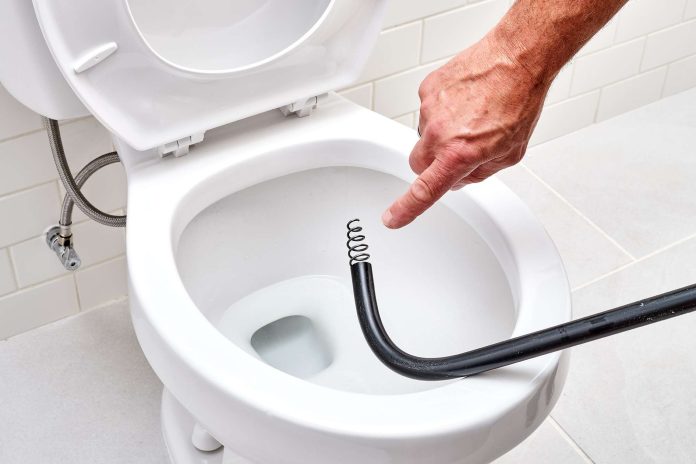A clogged toilet is one of the most inconvenient plumbing issues homeowners face. It can disrupt your daily routine, cause unpleasant odors, and even lead to water overflow if not handled promptly. Fortunately, with the right approach, a toilet bowl choke can often be resolved efficiently and safely. Understanding the causes, identifying the warning signs, and knowing when to call a professional plumber can help prevent serious damage and ensure your toilet functions smoothly.
Why Professional Help Is Often the Best Solution
While minor clogs can sometimes be fixed using simple DIY methods, persistent or recurring blockages often require professional assistance. Engaging a trusted Toilet Bowl Choke service ensures the issue is handled properly without damaging your plumbing system. Experienced plumbers use specialized tools such as drain snakes, high-pressure jetters, and inspection cameras to locate and remove blockages efficiently while maintaining hygiene and safety.
Common Causes of Toilet Bowl Chokes
To prevent frequent clogs, it’s important to understand what typically causes them. Some of the most common culprits include:
1. Excessive Toilet Paper
Using too much toilet paper can easily cause a blockage, especially if it doesn’t dissolve quickly. Thick or multi-ply paper can accumulate inside the pipes, obstructing the flow of water.
2. Foreign Objects
Items like wet wipes, sanitary products, cotton pads, and even small toys are not designed to be flushed. These non-degradable materials can get stuck in the drainage pipes and cause severe blockages over time.
3. Hard Water Deposits
In areas with hard water, mineral buildup can narrow the toilet’s internal pipes, reducing water flow and increasing the likelihood of a choke.
4. Aging or Damaged Pipes
Older plumbing systems may develop cracks, corrosion, or misalignment, which can trap debris and cause repeated blockages.
5. Poor Flushing Mechanism
A weak or incomplete flush may fail to clear waste effectively, leading to a partial clog that worsens over time.
Signs That Indicate a Toilet Bowl Choke
Recognizing the early signs of a choke can prevent a complete blockage and potential flooding. Common warning indicators include:
- Water rising unusually high in the bowl after flushing.
- Slow draining or gurgling sounds from the toilet.
- Foul odors emanating from the drain.
- Frequent need to flush multiple times for waste removal.
If you notice these symptoms, it’s best to address the issue promptly before it escalates into a more serious plumbing emergency.
Safe and Effective Methods to Fix a Toilet Bowl Choke
1. Use a Plunger
A plunger is the first tool most homeowners turn to when faced with a clogged toilet. Make sure the plunger cup fully covers the drain hole and use firm, consistent pressure to create suction. This can help dislodge soft blockages caused by toilet paper or waste.
2. Apply a Plumbing Auger (Toilet Snake)
For deeper or more stubborn clogs, a toilet auger can be inserted into the bowl to break apart or pull out the obstruction. This tool is especially useful for clogs located further down the drain line.
3. Use a Natural Cleaning Solution
If the choke is minor, a mixture of baking soda and vinegar followed by hot (not boiling) water can help break down organic material and clear buildup inside the pipes. This eco-friendly method is gentle and helps eliminate odors.
4. Avoid Harsh Chemicals
Commercial drain cleaners might promise quick results, but they can corrode pipes, damage toilet components, and pose health risks if not used correctly. It’s best to avoid them and opt for safer alternatives or professional assistance.
5. Call a Professional Plumber
If DIY methods fail or the problem keeps returning, a plumber can diagnose the root cause. Professionals can use camera inspection tools to identify underlying issues such as pipe blockages, tree root intrusions, or damaged plumbing joints.
Preventive Measures to Avoid Future Chokes
Keeping your toilet in good condition involves a few simple habits:
- Only flush toilet paper and human waste.
- Avoid disposing of wipes, sanitary products, or paper towels in the toilet.
- Regularly inspect for slow drainage and address it early.
- Schedule periodic plumbing maintenance to detect issues before they worsen.
- Educate household members, especially children, on proper toilet use.
The Benefits of Timely Repairs
Addressing a toilet bowl choke quickly offers several advantages beyond restoring convenience. It helps prevent water overflow, structural damage, and unpleasant odors. Moreover, timely intervention reduces repair costs and prolongs the lifespan of your plumbing system. A functional toilet also contributes to better hygiene and comfort at home.
Conclusion
A toilet bowl choke is a common household issue, but with prompt action and proper maintenance, it doesn’t have to become a major problem. While simple blockages can often be cleared using basic tools, persistent or recurring clogs should always be handled by experienced professionals. Reliable plumbing experts can ensure your toilet is restored to optimal working condition safely and efficiently, giving you peace of mind and a cleaner, more comfortable home.










